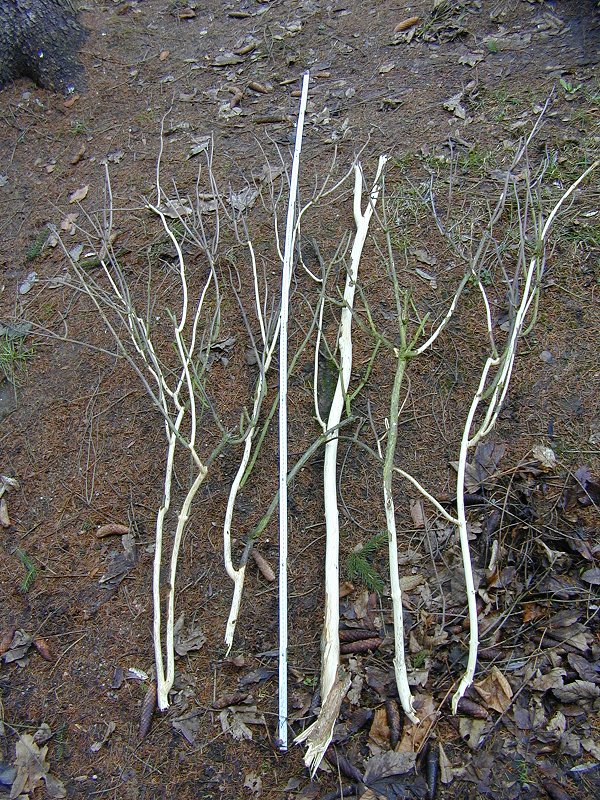|
Clethrionomys
''Clethrionomys'' is a genus of small, slender voles. In recent years the genus name was changed to ''Myodes'', however a 2019 paper found that ''Myodes'' was actually a junior synonym for '' Lemmus'', thus making it unusable. As such, ''Clethrionomys'' is re-established as the proper genus name. At the same time, several species were moved to the genus ''Craseomys'', so members of both genera are referred to as red-backed voles. This genus was described by Johannes von Nepomuk Franz Xaver Gistel under the pseudonym "G. Tilesius". Some authors cite the taxonomic authority as "Gistel, 1850", whereas others still use "Tilesius, 1850". The complete list of species is: *Western red-backed vole, ''Clethrionomys californicus'' *Tien Shan red-backed vole, ''Clethrionomys centralis'' * Southern red-backed vole, ''Clethrionomys gapperi'' *Bank vole, ''Clethrionomys glareolus'' *Northern red-backed vole The northern red-backed vole (''Clethrionomys rutilus'') is a small slender vole fou ... [...More Info...] [...Related Items...] OR: [Wikipedia] [Google] [Baidu] |
Southern Red-backed Vole
The southern red-backed vole or Gapper's red-backed vole (''Clethrionomys gapperi'') is a small slender vole found in Canada and the northern United States. It is closely related to the western red-backed vole (''Clethrionomys californius''), which lives to the south and west of its range and which is less red with a less sharply bicolored tail. Description These voles have short slender bodies with a reddish band along the back and a short tail. The sides of the body and head are grey and the underparts are paler. There is a grey color morph in the northeast part of their range. They are long with a 4 cm tailSouthern Red-backed Vole , borealforest.org and weigh about 6–42 g; average 20.6 g (0.21–1.48 oz; average 0.72 oz). [...More Info...] [...Related Items...] OR: [Wikipedia] [Google] [Baidu] |
Taxa Described In 1850
In biology, a taxon (back-formation from ''taxonomy''; : taxa) is a group of one or more populations of an organism or organisms seen by taxonomists to form a unit. Although neither is required, a taxon is usually known by a particular name and given a particular ranking, especially if and when it is accepted or becomes established. It is very common, however, for taxonomists to remain at odds over what belongs to a taxon and the criteria used for inclusion, especially in the context of rank-based (" Linnaean") nomenclature (much less so under phylogenetic nomenclature). If a taxon is given a formal scientific name, its use is then governed by one of the nomenclature codes specifying which scientific name is correct for a particular grouping. Initial attempts at classifying and ordering organisms (plants and animals) were presumably set forth in prehistoric times by hunter-gatherers, as suggested by the fairly sophisticated folk taxonomies. Much later, Aristotle, and later still ... [...More Info...] [...Related Items...] OR: [Wikipedia] [Google] [Baidu] |
Extant Piacenzian First Appearances
{{disambig ...
Extant or least concern is the opposite of the word extinct. It may refer to: * Extant hereditary titles * Extant literature, surviving literature, such as ''Beowulf'', the oldest extant manuscript written in English * Extant taxon, a taxon which is not extinct, such as an extant species * Extant Theatre Company, a disability arts organisation * ''Extant'' (TV series), an American television series * Hank Hall, also known as Extant, a DC Comics supervillain See also * Extent (other) Extent may refer to: Computing * Extent (file systems), a contiguous region of computer storage medium reserved for a file * Extent File System, a discontinued file system implementation named after the contiguous region * Extent, a chunk of ... [...More Info...] [...Related Items...] OR: [Wikipedia] [Google] [Baidu] |
Clethrionomys
''Clethrionomys'' is a genus of small, slender voles. In recent years the genus name was changed to ''Myodes'', however a 2019 paper found that ''Myodes'' was actually a junior synonym for '' Lemmus'', thus making it unusable. As such, ''Clethrionomys'' is re-established as the proper genus name. At the same time, several species were moved to the genus ''Craseomys'', so members of both genera are referred to as red-backed voles. This genus was described by Johannes von Nepomuk Franz Xaver Gistel under the pseudonym "G. Tilesius". Some authors cite the taxonomic authority as "Gistel, 1850", whereas others still use "Tilesius, 1850". The complete list of species is: * Western red-backed vole, ''Clethrionomys californicus'' *Tien Shan red-backed vole, ''Clethrionomys centralis'' * Southern red-backed vole, ''Clethrionomys gapperi'' *Bank vole The bank vole (''Clethrionomys glareolus'') is a small vole with red-brown fur and some grey patches, with a tail about half as long as it ... [...More Info...] [...Related Items...] OR: [Wikipedia] [Google] [Baidu] |
Northern Red-backed Vole
The northern red-backed vole (''Clethrionomys rutilus'') is a small slender vole found in Alaska, northern Canada, Scandinavia and northern Russia.Banfield, A. W. F. 1974. The mammals of Canada. Toronto, University of Toronto Press. Description They have short slender bodies with a rust-colored back, light brown sides and underparts and a short thick tail. Their short ears are visible through their fur. They are 14 cm long with a 3.5 cm tail and weigh about 30 to 40 g. Their dental formula is 1/1, 0/0, 0/0, 3/3. They are active year-round, usually at night. They can cause damage to fruit trees and stored grains. Plant communities Northern red-backed voles live in a variety of northern forest and shrubland habitats. They occur in every major forest type in central Alaska. Plant species commonly found in areas occupied by northern red-backed voles include black spruce (''Picea mariana''), white spruce (''Picea glauca''), quaking aspen (''Populus tremuloides''), paper bir ... [...More Info...] [...Related Items...] OR: [Wikipedia] [Google] [Baidu] |
Bank Vole
The bank vole (''Clethrionomys glareolus'') is a small vole with red-brown fur and some grey patches, with a tail about half as long as its body. A rodent, it lives in woodland areas and is around in length. The bank vole is found in much of Europe and in northwestern Asia. It is native to Great Britain but not to Ireland, where it has been accidentally introduced, and has now colonised much of the south and southwest. The bank vole lives in woodland, hedgerows and other dense vegetation, such as bracken and bramble. Its underground chamber is lined with moss, feathers and vegetable fibre and contains a store of food. It can live for eighteen months to two years in the wild and over 42 months in captivity and is mostly herbivorous, eating buds, bark, seeds, nuts, leaves and fruits and occasionally insects and other small invertebrates. It readily climbs into scrub and low branches of trees although it is not as versatile as a mouse. It breeds in shallow burrows, the female reari ... [...More Info...] [...Related Items...] OR: [Wikipedia] [Google] [Baidu] |
Tien Shan Red-backed Vole
The Tien Shan red-backed vole (''Clethrionomys centralis'') is a species of rodent in the family Cricetidae. It is found in the Tian Shan Mountains of northwestern China, southeastern Kazakhstan, and Kyrgyzstan. References *Musser, G. G. and M. D. Carleton. 2005. Superfamily Muroidea. pp. 894–1531 ''in'' Mammal Species of the World a Taxonomic and Geographic Reference. D. E. Wilson and D. M. Reeder eds. Johns Hopkins University Press, Baltimore. Clethrionomys Rodents of China Mammals of Central Asia Mammals described in 1906 Taxa named by Gerrit Smith Miller Jr. Taxonomy articles created by Polbot {{Arvicolinae-stub ... [...More Info...] [...Related Items...] OR: [Wikipedia] [Google] [Baidu] |
Western Red-backed Vole
The western red-backed vole (''Clethrionomys californicus'') is a species of vole in the family Cricetidae. It is found in California and Oregon in the United States and lives mainly in coniferous forest. The body color is chestnut brown, or brown mixed with a considerable quantity of black hair gradually lightening on the sides and grading into a buffy-gray belly, with an indistinct reddish stripe on the back and a bicolored tail about half as long as the head and body. Taxonomy The western red-backed vole was initially described by C. Hart Merriam under its original scientific name ''Evotomys californicus''. The type specimen was obtained at near Eureka, California. It was an adult male collected by Theodore Sherman Palmer on June 3, 1889. Description The length of the western red-backed vole ranges from overall, with a tail between , hindfoot , and ear . The height ranges between . The species is closely related to the southern red-backed vole (''Clethrionomys gapperi ... [...More Info...] [...Related Items...] OR: [Wikipedia] [Google] [Baidu] |
Taxonomic Authority
In biology, taxonomy () is the scientific study of naming, defining ( circumscribing) and classifying groups of biological organisms based on shared characteristics. Organisms are grouped into taxa (singular: taxon), and these groups are given a taxonomic rank; groups of a given rank can be aggregated to form a more inclusive group of higher rank, thus creating a taxonomic hierarchy. The principal ranks in modern use are domain, kingdom, phylum (''division'' is sometimes used in botany in place of ''phylum''), class, order, family, genus, and species. The Swedish botanist Carl Linnaeus is regarded as the founder of the current system of taxonomy, having developed a ranked system known as Linnaean taxonomy for categorizing organisms. With advances in the theory, data and analytical technology of biological systematics, the Linnaean system has transformed into a system of modern biological classification intended to reflect the evolutionary relationships among organisms, both li ... [...More Info...] [...Related Items...] OR: [Wikipedia] [Google] [Baidu] |
Pseudonym
A pseudonym (; ) or alias () is a fictitious name that a person assumes for a particular purpose, which differs from their original or true meaning ( orthonym). This also differs from a new name that entirely or legally replaces an individual's own. Many pseudonym holders use them because they wish to remain anonymous and maintain privacy, though this may be difficult to achieve as a result of legal issues. Scope Pseudonyms include stage names, user names, ring names, pen names, aliases, superhero or villain identities and code names, gamertags, and regnal names of emperors, popes, and other monarchs. In some cases, it may also include nicknames. Historically, they have sometimes taken the form of anagrams, Graecisms, and Latinisations. Pseudonyms should not be confused with new names that replace old ones and become the individual's full-time name. Pseudonyms are "part-time" names, used only in certain contexts: to provide a more clear-cut separation between one's privat ... [...More Info...] [...Related Items...] OR: [Wikipedia] [Google] [Baidu] |
Craseomys
''Craseomys'' is a genus of small, slender voles. The complete list of species is: * Anderson's red-backed vole, ''C. andersoni'' *Imaizumi's red-backed vole, ''C. imaizumii'' * Korean red-backed vole, ''C. regulus'' * Hokkaido red-backed vole, ''C. rex'' * Grey red-backed vole, ''C. rufocanus'' *Shansei vole, ''C. shanseius'' *Smith's vole Smith's vole (''Craseomys smithii'') is a species of rodent in the family Cricetidae. It is also known as Smith's red-backed vole and is found only in Japan. This vole is named after Richard Gordon Smith, (1858–1918) who, after falling out wit ..., ''C. smithii'' References Rodent genera Taxa described in 1900 Taxa named by Gerrit Smith Miller Jr. {{Arvicolinae-stub ... [...More Info...] [...Related Items...] OR: [Wikipedia] [Google] [Baidu] |





